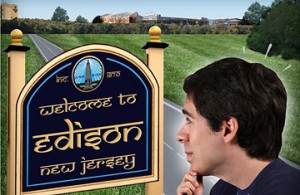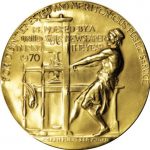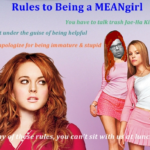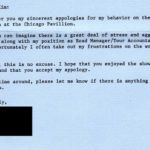
By Joel Stein
TIME
June 30, 2010
I am very much in favor of immigration everywhere in the U.S. except Edison, N.J. The mostly white suburban town I left when I graduated from high school in 1989 — the town that was called Menlo Park when Thomas Alva Edison set up shop there and was later renamed in his honor — has become home to one of the biggest Indian communities in the U.S., as familiar to people in India as how to instruct stupid Americans to reboot their Internet routers.
My town is totally unfamiliar to me. The Pizza Hut where my busboy friends stole pies for our drunken parties is now an Indian sweets shop with a completely inappropriate roof. The A&P I shoplifted from is now an Indian grocery. The multiplex where we snuck into R-rated movies now shows only Bollywood films and serves samosas. The Italian restaurant that my friends stole cash from as waiters is now Moghul, one of the most famous Indian restaurants in the country. There is an entire generation of white children in Edison who have nowhere to learn crime.
I never knew how a bunch of people half a world away chose a random town in New Jersey to populate. Were they from some Indian state that got made fun of by all the other Indian states and didn’t want to give up that feeling? Are the malls in India that bad? Did we accidentally keep numbering our parkway exits all the way to Mumbai?
I called James W. Hughes, policy-school dean at Rutgers University, who explained that Lyndon Johnson’s 1965 immigration law raised immigration caps for non-European countries. LBJ apparently had some weird relationship with Asians in which he liked both inviting them over and going over to Asia to kill them.
After the law passed, when I was a kid, a few engineers and doctors from Gujarat moved to Edison because of its proximity to AT&T, good schools and reasonably priced, if slightly deteriorating, post–WW II housing. For a while, we assumed all Indians were geniuses. Then, in the 1980s, the doctors and engineers brought over their merchant cousins, and we were no longer so sure about the genius thing. In the 1990s, the not-as-brilliant merchants brought their even-less-bright cousins, and we started to understand why India is so damn poor.
Eventually, there were enough Indians in Edison to change the culture. At which point my townsfolk started calling the new Edisonians “dot heads.” One kid I knew in high school drove down an Indian-dense street yelling for its residents to “go home to India.” In retrospect, I question just how good our schools were if “dot heads” was the best racist insult we could come up with for a group of people whose gods have multiple arms and an elephant nose.
Unlike some of my friends in the 1980s, I liked a lot of things about the way my town changed: far better restaurants, friends dorky enough to play Dungeons & Dragons with me, restaurant owners who didn’t card us because all white people look old. But sometime after I left, the town became a maze of charmless Indian strip malls and housing developments. Whenever I go back, I feel what people in Arizona talk about: a sense of loss and anomie and disbelief that anyone can eat food that spicy.
To figure out why it bothered me so much, I talked to a friend of mine from high school, Jun Choi, who just finished a term as mayor of Edison. Choi said that part of what I don’t like about the new Edison is the reduction of wealth, which probably would have been worse without the arrival of so many Indians, many of whom, fittingly for a town called Edison, are inventors and engineers. And no place is immune to change. In the 11 years I lived in Manhattan’s Chelsea district, that area transformed from a place with gangs and hookers to a place with gays and transvestite hookers to a place with artists and no hookers to a place with rich families and, I’m guessing, mistresses who live a lot like hookers. As Choi pointed out, I was a participant in at least one of those changes. We left it at that.
Unlike previous waves of immigrants, who couldn’t fly home or Skype with relatives, Edison’s first Indian generation didn’t quickly assimilate (and give their kids Western names). But if you look at the current Facebook photos of students at my old high school, J.P. Stevens, which would be very creepy of you, you’ll see that, while the population seems at least half Indian, a lot of them look like the Italian Guidos I grew up with in the 1980s: gold chains, gelled hair, unbuttoned shirts. In fact, they are called Guindians. Their assimilation is so wonderfully American that if the Statue of Liberty could shed a tear, she would. Because of the amount of cologne they wear.
TIME responds: We sincerely regret that any of our readers were upset by this humor column of Joel Stein’s. It was in no way intended to cause offense.
Joel Stein responds: I truly feel stomach-sick that I hurt so many people. I was trying to explain how, as someone who believes that immigration has enriched American life and my hometown in particular, I was shocked that I could feel a tiny bit uncomfortable with my changing town when I went to visit it. If we could understand that reaction, we’d be better equipped to debate people on the other side of the immigration issue.
Kal Penn
Huffington Post
July 2, 2010
I want to applaud Joel Stein for his hilarious account of Edison, New Jersey in his Time magazine article this week, “My Own Private India“; it is as unique and groundbreaking as Thomas Alva himself.
Were it not for the intelligent, fresh sense of humor of individuals like Mr. Stein, the world may never know about Americans who happen to be of Indian descent. Gags about impossibly spicy food? I’d never heard those before! Multiple Gods with multiple arms? Multiple laughs! Recounting racial slurs like “dot-head”? Oh, Mr. Stein, is too good! I don’t know how he comes up with such unique bits. (I was worried that he’d missed an opportunity to joke about Dr. King’s predecessor, Gandhi, but I see that he got to that hilarity on Twitter. More never-before-heard satire!)
Growing up a few miles from Edison, NJ, I always thought it was hilarious when I’d get the crap kicked out of me by kids like Stein who would yell “go back to India, dothead!” I was always ROTFLMAO when people would assume that I wasn’t American. He really captured the brilliant humor in that one too!
Critics might call Mr. Stein’s humor super-tired or as played out as the jokes about that cheap Jewish car that stopped on a dime to pick it up, or that African American kid who got marked absent at night school. Although unlike Stein’s Indian American piece, in 2010 those other jokes don’t show up in mainstream media like Time Magazine. I wonder why that is…






Asking people to write about your own book isn’t very classy. But in an age where taking a photo of yourself in a bathroom mirror and posting it on your Facebook wall is acceptable, I’m going to give this a shot anyway.
My first book, Man Made: A Stupid Quest for Masculinity, came out May 15. It’s about how having a son made me panic and feel like I wasn’t manly enough to properly raise him. So I became a boy scout, did three days of boot camp at Fort Knox, learned how to hunt, rented a Lamborghini for three days, and went a round with UFC Champ Randy Couture. I also did a bunch of other stuff.
The book is also going to be a major motion picture that I’m sure never gets made:
http://insidemovies.ew.com/2012/04/16/shawn-levy-acquires-man-made-book-for/
Does any of this sound interesting to you? As part of the book I traveled to more rural parts of the country when I learned how to build a house and hunt, so we could talk about that. I’ve also just done a lot of traveling for reporting, so I’m sure we can find something there, too. Plus I have videos of me doing all this man stuff, if you would want to put that up on your site.
Thanks for considering it,
Joel
This guys is such a douchebag. I’ve always hated his writing.
Seriously. The nerve of this guy to ask you to plug his fucking book. Loved your blog post by the way!